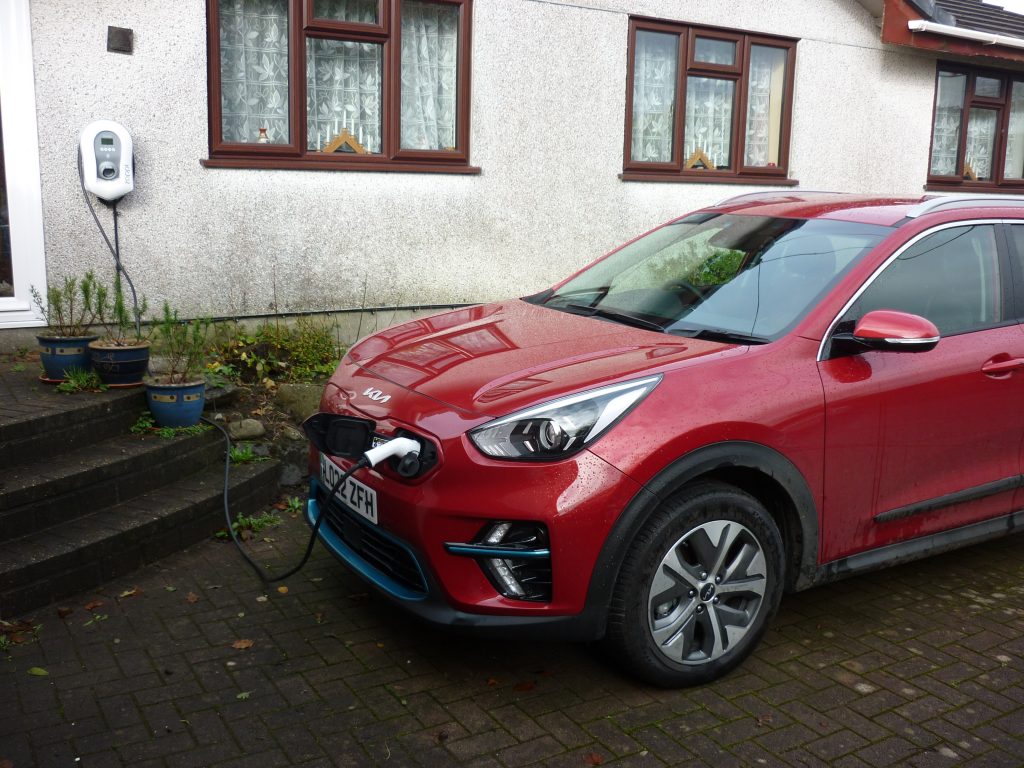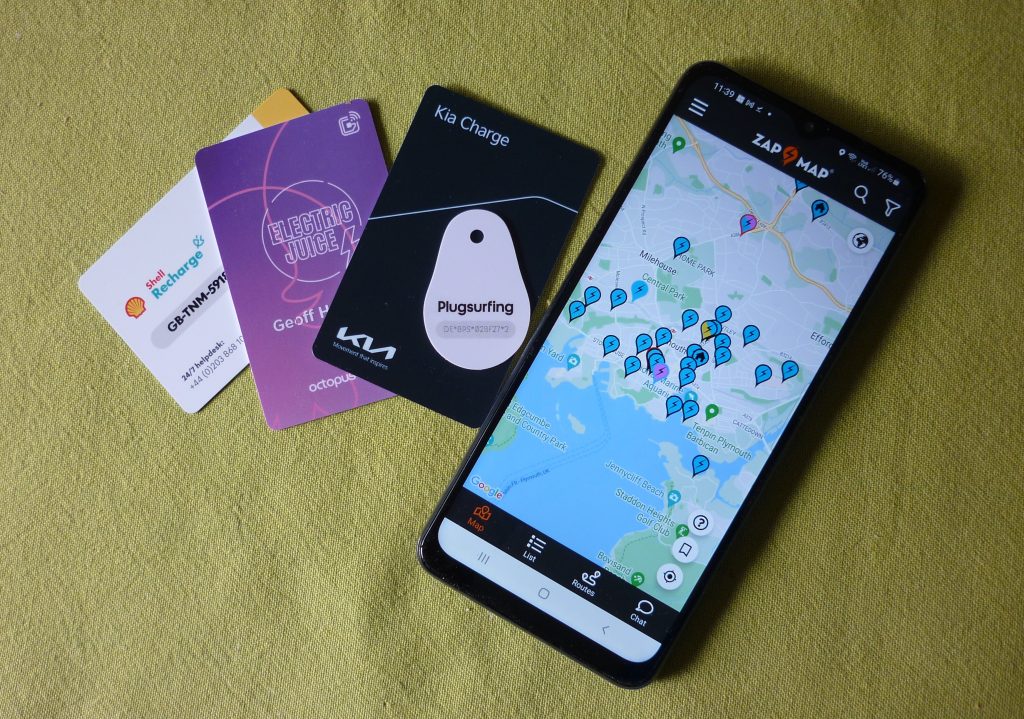I’ve always liked cars, and I’ve had all sorts. Big cars, little cars, new cars, vintage cars, diesel cars, petrol cars … but all with one thing in common. An engine. With the move to Electric Vehicles gathering pace, and with an outright ban on internal combustion engine (ICE) cars from 2030, I wondered whether I would like electric motoring. Could I live with reduced range between having to refuel, refuelling (or charging) taking hours rather than minutes? What are they actually like to drive and more importantly, what are they like to live with as a means of transport?

I wanted a way to find out without committing to buy one. Certainly, I wasn’t prepared to jump into EV ownership and part with my ICE car without understanding the day to day first. My solution? Lease one. If I like it, I can look around to see what to save up for. If I don’t, then just get the leasing company to take it away. So it was that a shiny red Kia Niro appeared on my driveway in July, courtesy of an offer from EDF. After all, they want to sell electricity… Here’s my view after the first three months.
Why now, when the ban is years away? What triggered it was not just the fact that diesel went up from £1.20 to £2 a litre; it was more that for a worrying period, you just couldn’t get it. The “sorry – no diesel” signs coincided with planned trips up country, cancelled due to a fear of getting stranded. Electricity might be getting more expensive, but it is at least still available.
But they don’t go very far before needing charging. The range of EVs has steadily improved, to the point where that isn’t true anymore. This one will theoretically go about 270 miles in the summer, more like 240 miles in the winter before it needs charging. (Battery efficiency drops at low temperatures). But I don’t like driving for more than 200 miles without at least a coffee and a comfort stop, so the car has as much range as I have. I audited the last five year’s worth of journeys in the diesel: longest ever journey before stopping 300 miles; occurred only once. Only six journeys in five years over 150 miles before a break. Looks like 200 miles shouldn’t be a worry.
There aren’t enough chargers. Hard to argue with, but not actually a real-world problem for me, and a situation that’s changing. I’m lucky in that I can charge it on my driveway; in three months the only time I’ve used a rapid (public) charger is when I wanted to try out the system. I used the one by Callington Town Hall, putting 150 miles worth of charge in in the time it to buy a coffee from the Post Office and drink it.
Charging takes ages. You have to think of charging as something that happens while you’re doing something else. At home, from dead flat to full takes 12 hours. So, bung it on charge after dinner and its ready by breakfast, adding about 30 miles worth per hour. Actually, its more like owning a phone – you top up a bit of charge every now and then when its convenient. On a longer trip, a rapid charger adds about 200 miles worth per hour, (with most newer models charging twice that fast). Unlike ICE cars, the trick is NOT to flatten the battery and recharge it to the brim; the trick is to add short bursts of power once the battery falls to 20 – 30%, and do that every 120 miles or so. Aim to get to your destination with a low battery – you can charge it up while you relax after your journey. Route planning apps like ABRP and ZapMap help enormously with planning your charge.

Charging is complicated and needs apps, cards and all sorts. Currently true, but changing. Right now, it isn’t as easy as pulling up to a pump, fuelling and paying. You seem to end up with a glovebox full of charge cards and multiple apps on your phone, each for a different charge supplier. But this is changing. Octopus Energy has an app (Electroverse – you don’t need to be an Octopus customer, though they do get a discount) that allows you to pay for your electricity at the vast majority of charging stations. Podpoint gets you free electricity at Tesco. Shell Recharge stations work with any ordinary contactless payment card. No charging stations take cash.
But the price of electricity has gone through the roof. True, but then again, so has petrol. Over the last 1500 miles, I’ve averaged 4.2 miles per kilowatt-hour. At the current domestic price of 33.85 p (set by the government energy price cap), that means that 100 miles worth of electricity costs £8.06. The petrol equivalent car (45mpg around town, £1.72 per litre) would cost £17.20. Of course, when I ordered it, 100 miles would have cost me just £4.26, but that was before… If I had an off peak deal, I would be paying just £2.86, but as I don’t have solar panels, the rest of my electricity would be way more expensive, cancelling the savings. Of course, with solar panels, my motoring could be free.
What if it overloads your fuse box, won’t you blow the main? Here’s where the charger is clever. The installer programmes the charger with a maximum total draw from the mains. If we use power in the house (oven on for dinner, kettle on for a cuppa) the car charger slows itself down to limit the maximum we draw from the grid. Once the kettle’s boiled or dinner is on the table, it speeds up again automatically.
But what’s it like to drive? Unbelievably smooth, potholes notwithstanding. (I’m comparing with a Range Rover here, whose drivetrain seems like a tractor in comparison). There’s no gearbox, so no waiting for clutches to engage or automatic boxes to select a gear. You just gently press the accelerator and off you go. Startlingly quick to accelerate, it makes life very easy getting out of junctions and driving around town. Silent when stationary, at very low speeds it deliberately emits a hum to warn of its presence, which no-one seems to recognise. A real hazard is pedestrians stepping off the pavement as you can’t hear it coming. Actually, keep a close eye out for guide dogs; they are trained to recognise traffic noises but seem oblivious to the EV.
Bet it’s hard to get serviced. Well, you have to use a garage that can deal with electric vehicles. But with a major service being to change the brake pads, the battery coolant and the drivetrain oil, I expect it to be very cheap to service, even at a main dealer.
What’s the downside? Funnily enough, the heater! I’m so used to having 200kg of hot steel pumping out waste heat (doesn’t that look strange written down!) so haven’t mastered the art of just setting a comfy temperature and letting the heating sort itself out. Oh, and as there’s no towbar, I can’t fit my bike rack. (The replacement model can be fitted with a towbar, but not this one).
So you’re sold then? It’s a three year deal, lets see how it pans out, and I’ll keep you posted. First, let’s see how it copes with a winter…
Geoff Hardman